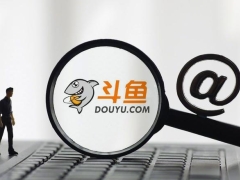E-commerce (electronic commerce or EC) is the buying and selling of goods and services, or the transmitting of funds or data, over an electronic network, primarily the internet. These business transactions occur either as business-to-business, business-to-consumer, consumer-to-consumer or consumer-to-business. The terms e-commerce and e-business are often used interchangeably. The term e-tail is also sometimes used in reference to transactional processes for online shopping.

Download this free guide


This complimentary document comprehensively details the elements of a strategic IT plan that are common across the board from identifying technology gaps and risks to allocating IT resources and capabilities. The SearchCIO.com team has compiled its most effective, most objective, most valued feedback into this single document that’s guaranteed to help you better select, manage, and track IT projects for superior service delivery.
Start Download
By submitting your personal information, you agree that TechTarget and its partners may contact you regarding relevant content, products and special o互联网电子商务和移动商务消费渠道的普及,使得支付市场将在不久的将来继续呈现更加美好的增长前景。ffers.
You also agree that your personal information may be transferred and processed in the United States, and that you have read and agree to the Terms of Use and the Privacy Policy.
History of e-commerce
The beginnings of e-commerce can be traced to the 1960s, when businesses started using Electronic Data Interchange (EDI) to share business documents with other companies. In 1979, the American National Standards Institute developed ASC X12 as a universal standard for businesses to share documents through electronic networks. After the number of individual users sharing electronic documents with each other grew in the 1980s, in the 1990s the rise of eBay and Amazon revolutionized the e-commerce industry. Consumers can now purchase endless amounts of items online, both from typical brick and mortar stores with e-commerce capabilities and one another.
E-commerce applicationsE-commerce is conducted using a variety of applications, such as email, online catalogs and shopping carts, EDI, File Transfer Protocol, and web services. This includes business-to-business activities and outreach such as using email for unsolicited ads (usually viewed as spam) to consumers and other business prospects, as well as to send out e-newsletters to subscribers. More companies now try to entice consumers directly online, using tools such as digital coupons, social media marketing and targeted advertisements.
The benefits of e-commerce include its around-the-clock availability, the speed of access, the wide availability of goods and services for the consumer, easy accessibility, and international reach. Its perceived downsides include sometimes-limited customer service, consumers not being able to see or touch a product prior to purchase, and the necessitated wait time for product shipping.
The e-commerce market continues to grow: online sales accounted for more than a third of total U.S. retail sales growth in 2015, according to data from the U.S. Commerce Department. Web sales totaled $341.7 billion in 2015, a 14.6% increase over 2014. E-commerce conducted using mobile devices and social media is on the rise as well: Internet Retailer reported that mobile accounted for 30% of all U.S. e-commerce activities in 2015. And according to Invesp, 5% of all online spending was via social commerce in 2015, with Facebook, Pinterest and Twitter providing the most referrals.
The rise of e-commerce forces IT personnel to move beyond infrastructure design and maintenance and consider numerous customer-facing aspects such as consumer data privacy and security. When developing IT systems and applications to accommodate e-commerce activities, data不知道从何时开始,个人信用渗透到生活的方方面面。图书、数码产品免押金借用,办理签证无需银行流水证明,甚至租车住酒店都不需要交付押金…… governance related regulatory compliance mandates, personally identifiable information privacy rules and information protection protocols must be considered.
Government regulations for e-commerceIn the United States, the Federal Trade Commission (FTC) and the Payment Card Industry (PCI) Security Standards Council are among the primary agencies that regulate e-commerce activities. The FTC monitors activities such as online advertising, content marketing and customer privacy, while the PCI Council develops standards and rules including PCI-DSS compliance that outlines procedures for proper handling and storage of consumers financial data.
To ensure the security, privacy and effectiveness of e-commerce, businesses should authenticate business transactions, control access to resources such as webpages for registered or selected users, encrypt communications and implement security technologies such as the Secure Sockets Layer and two factor authentication.
This was last d in June 2016
Next Steps #p#分页标题#e#Web fraud detection systems can secure e-commerce. This Buying Decisions series offers an introduction to Web fraud detection systems, and examines four scenarios where Web fraud detection is used in an enterprise, as well as purchasing criteria for Web fraud detection systems.
Continue Reading about e-commerce (electronic commerce or EC)
Related Terms
labor automation
Labor automation refers to the use of technology to perform specific tasks or jobs traditionally done by humans. As artificial ...
See complete definition
multisig (multisignature)
Multisig, also referred to as multi-signature, describes the requirement of obtaining two or more signatures to authorize or ...
See complete definition
Load More View All
Load More View All News
View All Get started
View All Manage
PRO+ Content
Find more PRO+ content and other member only offers, here.






